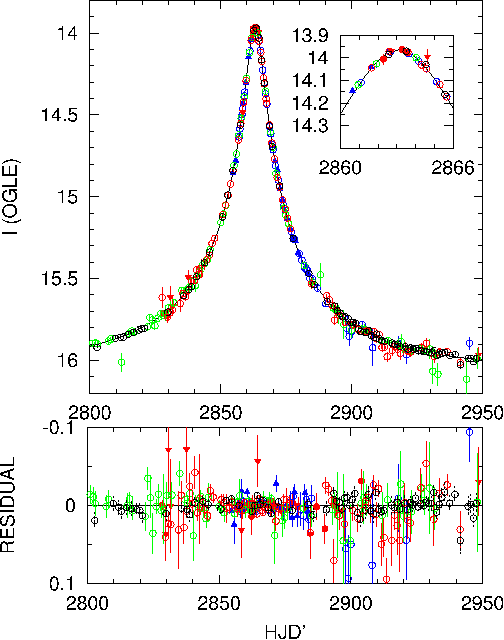
These data show a clear sign of a distortion due to the Earth's accelerated motion, which yields a measurement of the relative lens-source parallax in units of the angular Einstein radius.
The astrometry of 81 OGLE images moreover shows that the blended light in the event is coincident with the microlensed source to within about 15 mas.
Since it is therefore likely that this blended light arises from the lens, we are given the opportunity of obtaining a direct measurement of the relative proper motion between lens and source by future space-based astrometric measurements which would yield the required information 3 years after the peak occured with the resolution of the Hubble Space Telescope (HST).
Together with the event time-scale, the combination of the measurement of proper motion and parallax yields the lens mass. Ambiguities in the parallax measurement arising from the photometric lightcurve will be completely resolved by obtaining the direction of proper motion.